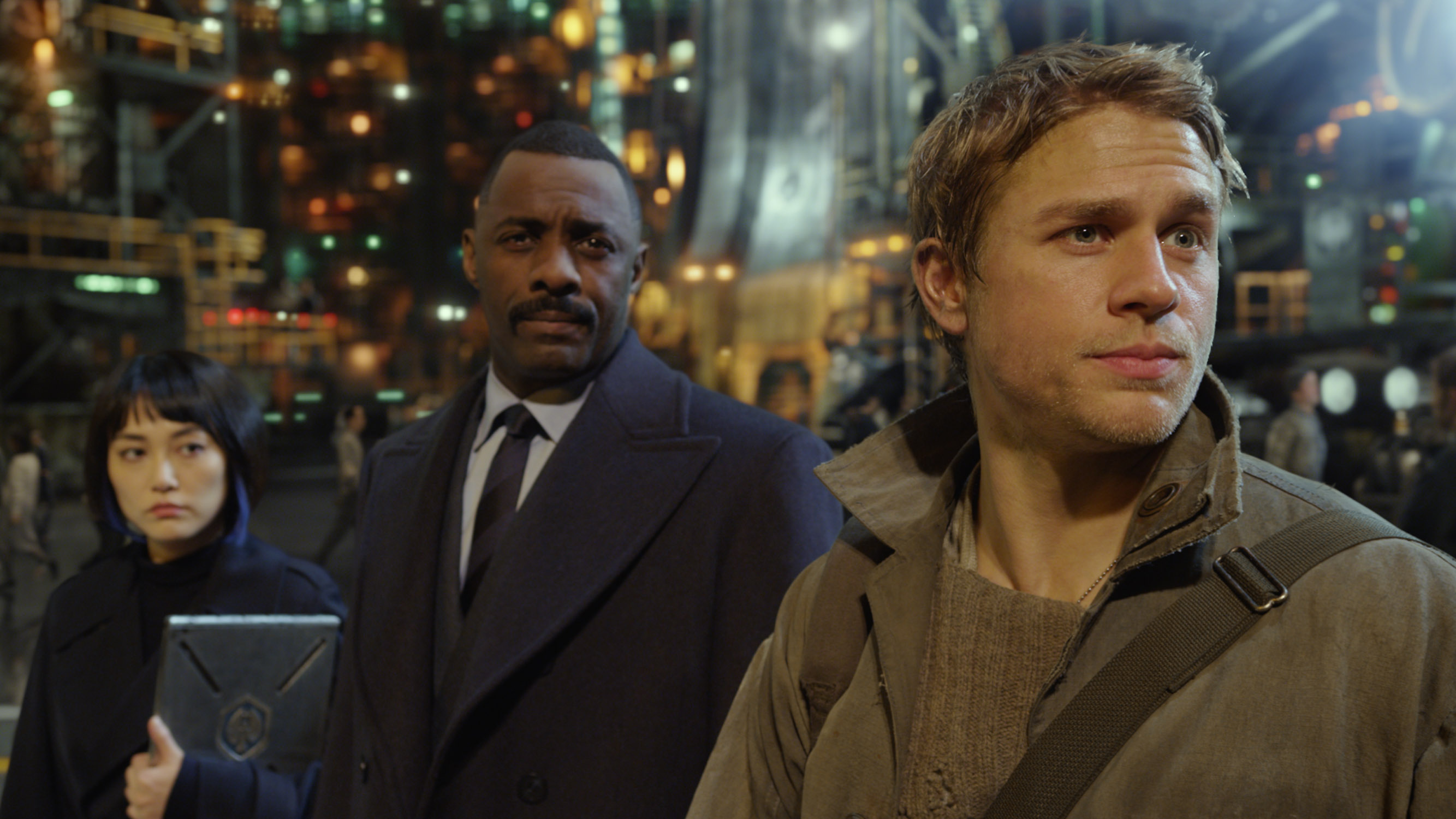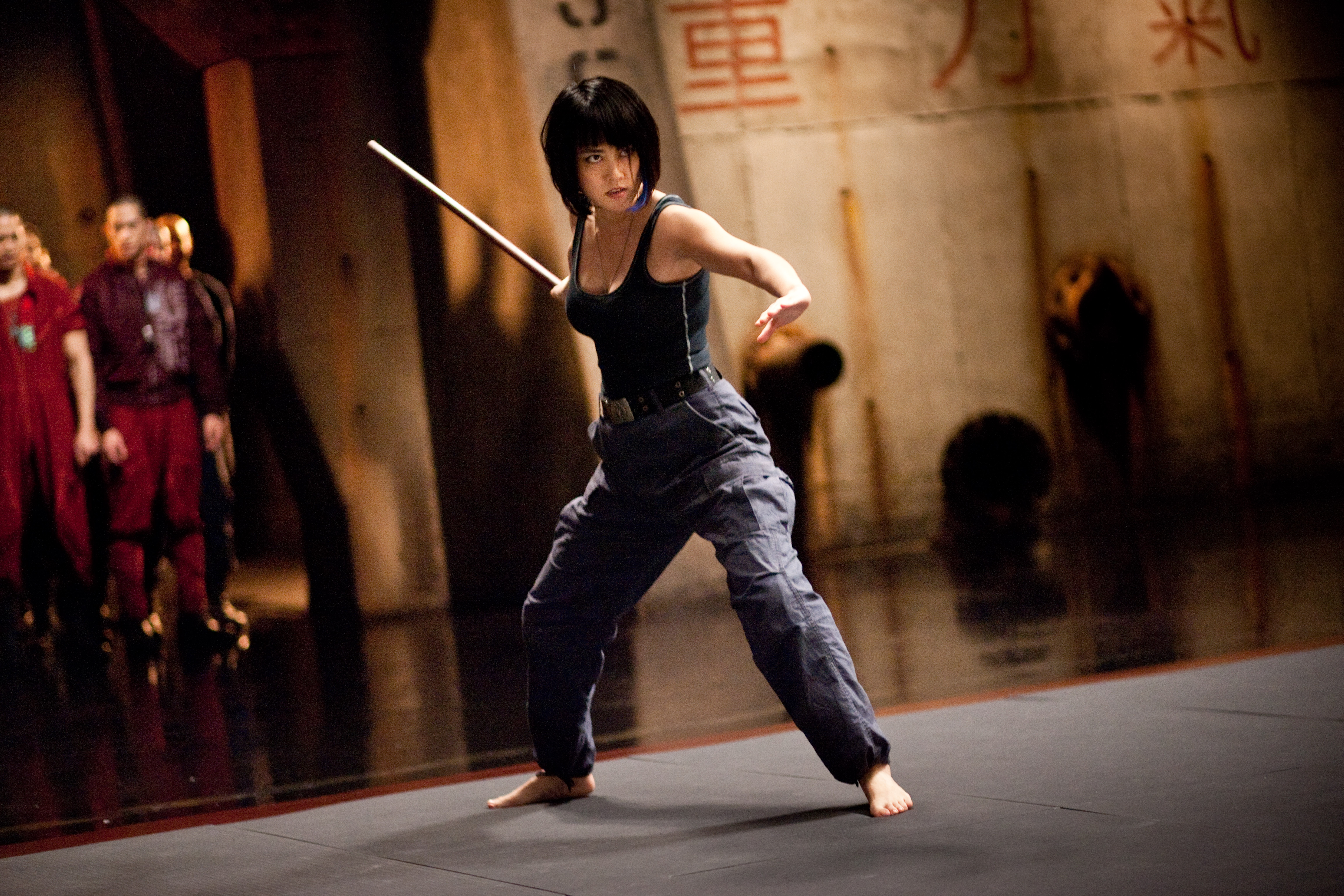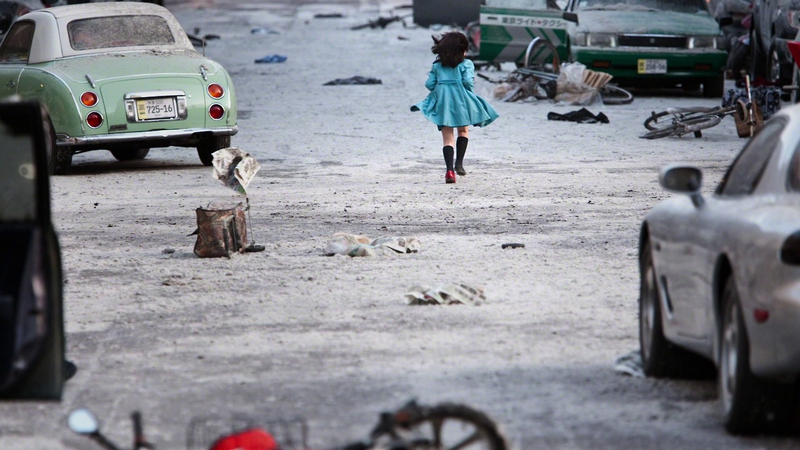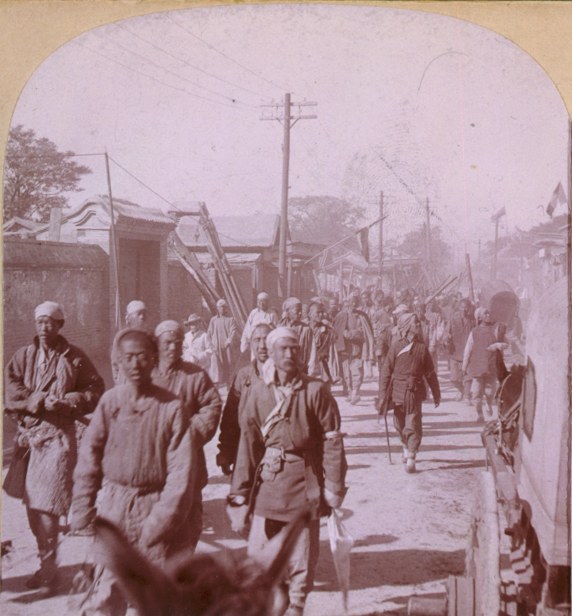NOTE TO THE UNWARY– THIS ARTICLE DEFINITELY CONTAINS SPOILERS!
In my last post, I started a comparison of a pair of films:
Guillermo de Toro’s Pacific Rim and
James Mangold’s Wolverine. Both of
these were released in 2013, and both seem to articulate a shared fantasy space
of the global realm, articulated around the Orient as a locus of desire and anxiety.
The films, of course, were released at a moment when – at the very least in the
Western imagination – the political and economic hegemony of the West, and of
America in particular, were increasingly being challenged by the growth of
China and the “Asian Tiger” economies. Recently, for example, it has been
projected that the twenty-first century will be an “Asian Century” in the same
way that the nineteenth century was British and the twentieth was an American
one. [1] I would bet good money that a search under the keyword “China” on any mainstream
Western news site (the BBC for example) will easily confirm the pervasiveness
of this as a media narrative, with articles dealing with China consistently
focusing on its growth, industrialisation and supposed impending economic
dominance over the West – peppered of course with criticisms of its human
rights record – to produce an overall picture of a set of fears that perhaps
hasn’t moved on enormously since the era when “yellow peril” was a frequent
idea. Recently, however, more sober analysis in the New Left Review has highlighted the extent to which, in spite of
the tectonic shifts in the global economy caused by the shock of 2008, such
prognoses are a matter of the Western imagination rather than stark economic
fact, with Peter Nolan and Jin Zhang, for example, showing just how far behind
American dominance far-Eastern corporations are, and the extent to which the
current markets are still stacked to perpetuate this situation. [2] (I use
the metaphor of “tectonics” with Pacific
Rim in mind, to which I will be turning shortly!).
The argument in my recent post, through a fairly basic
analysis of Wolverine, has been to
suggest that the plots of some recent American action movies are formed as a
response to such anxieties. What ensues is a renewed sense of the East as a
privileged object or space of desire and mystery, and the revivification of a
hardly reconstructed orientalism. A further dimension is added to this by the
way that Asia’s growth as an economic and political power has been mirrored by the arrival of popular-cultural and cinematic forms (we are concerned here in particular with action cinema)
imported to the West. Such a process started, of course, with the arrival of the Japanese chanbara during the “economic miracle”
of the 50s and 60s, followed by the kung fu movie at the height of Hong Kong’s
1970s electronics boom, the appearance of Korean cinema with the rise of the
Four Tigers, and an interest in swordplay (wuxia) films such as Crouching Tiger Hidden Dragon or Hero at the time when the PRC was coming to the fore as a global power. These genres,
rising to compete with Hollywood, have had a decisive impact on global cinema –
especially action cinema – and their tropes, images and ways of filming have
started to permeate Hollywood’s language, creating a situation where a cultural
as well as an economic hegemony seems to dissolve, and must be negotiated by
Western directors such as Mangold and del Toro.
In this post, I move on to look at how the same factors play
out in del Toro’s Pacific Rim.
Pacific Rim, to
give a brief overview, is set in a future in which giant Godzilla-like monsters
from a mysterious other dimension emerge from the intercontinental rift at the
heart of the Pacific Ocean, to attack humanity. (The monsters are named, after
the Japanese monster-movie genre, kaiju.)
To fight these monsters, humanity unites and builds a series of
hyper-technological giant robots, called in the film Jaeger (the German for “hunters”), each piloted by a pair of pilots
whose minds are united to form a single consciousness through a
psycho-cybernetic link. However, the war is not going well for mankind. The
film’s hero, Raleigh Becket (played by Charlie Hunnam), is a washed up Jaeger pilot, who has lost his brother
whilst on a mission. He has a chance to prove himself once more, and teams up
with the mysterious Mako (Rinko Kikuchi) – a Japanese woman who was saved as a
child by an African-American Jaeger pilot,
Stacker Pentecost (Idris Elba), who now plays the role of a father-figure for
her, but also the General in charge of what’s left of the Jaeger programme. Mako and Releigh are each suffering too much from
a mental trauma to be fully trusted pilots – Raleigh’s brother has died whilst
he was in an electronic “mind-meld” with him, and Mako’s parents were killed in
front of her whilst she was still a child. This being a movie, earth’s last
stand will, of course, be left to them.
The film’s Pacific setting – tying it to the concerns of Wolverine – seems, as the movie
progresses, to slide further and further East: the first monster attack, shown
at the very start of the film, is in San Francisco, and the final scenes are set
around Hong Kong, which is imagined in the mould of 1930s Hollywood Chinatown:
a dark and impenetrable world of criminal networks, money, and exotic
black-market commerce.
 |
| Concept art for the Hong Kong scenes in Pacific Rim. |
In many ways, del Toro’s film, then, reiterates a series of
the tropes that we are offered in Wolverine.
At its core is an image of a “Pacific Rim” culture that might, perhaps, stand
in for the global and for contemporary processes of globalisation (and for a
dream of global reconciliation), and that connects, on the one side the
American Occident, and on the other the easternmost reaches of Asia. Like in Wolverine, the fantasised Asian city in
which much of the film is set is a locus of crime, gangsterism and decadence.
Like Wolverine, the film riffs on
Asian (and especially Japanese) cinematic genres, in particular this time playing
on and making a series of explicit intertextual references to the Godzilla movies of the 1960s, but also
providing us with some spectacular – if CGI-heavy – martial-arts style
choreography, with giant anthropomorphic robots fighting monsters, and even a “dojo”-type
scene where the hero and heroine square off with staves. Like Wolverine, Pacific Rim has a white American male protagonist, with the exotic,
oriental setting doubled by the prominence of an Asian female love interest.
Pacific Rim,
however, seems nonetheless a rather
different kettle of fish from Wolverine.
It’s an altogether more subtle and complex cinematic experience, and much
harder to run the kind of crude semiotic-style analysis I have recently performed
on The Wolverine. Perhaps I’m being
overly harsh on the film, (I’d ove to read any kind of counter-argument!), but I’m
not sure that there is much to be found in The
Wolverine that lies in excess of the kind of analysis that I have run on it,
but del Toro’s offering would, I think, be far from exhausted by a similar
exercise. This may well make the analysis I’ll try and set out here a rather
more unsatisfactory one than previously, bit I’ll do my best to make some sense
of it here, in any case.
The first thing that probably complicates the picture is the
“authorial” nature of the work. I just admit to not knowing enough about de
Toro as an auteur to really push this kind of analysis, but Pacific Rim certainly reiterates many of
the themes and motifs that have interlaced his other work: for example, the
opening of a portal between this world and a hellish and daemonic “other”
reality, that might itself, especially in combination with del Toro’s
surrealistic visual language, be equated with the dark zone of the id. And perhaps, as with for
example Pan’s Labyrinth, the film is also concerned with the influences of such an id on the nightmare of modern history. There is certainly, then, a potential
for reading a degree of critical intent, and even self-reflexivity in del
Toro’s evocation of the Pacific Rim geography as the setting of his film.
Perhaps, however, we might need to consider the nature of the very gesture of locating the id, and all the monsters
of the mind, in the Far East – its alterity transforming it into a kind of
space of projected Western nightmares.
In spite of the ways in which such a gesture might be
retrograde, Del Toro’s vision of the future is nonetheless altogether more
dystopian and critical in its relation to an American world order than Wolverine. When aliens attack, and
humanity is finally united to fight them, the ensuing world, resembling as it
does the current global order of media image and free-market corruption, is
hardly benign. It is depicted as a militarised, quasi-fascistic order in a
state of economic and military crisis, sustained through the infantilising
media worship of a warrior class, and with war turned into a video-game
spectacle. (Does this sound familiar anyone?) This order is underpinned by the
hopeless and ultimately futile labour of a proletarian mass building walls
against the aliens. The divide between an exceptional military elite and
the wall-building workers is dramatised by the protagonist’s fall and subsequent
rise between these two classes. This world-state seems, in many ways, the
uncanny double of the monstrous kaiju that
invade our reality from beyond, and the imperial dreams of their alien creators.
We can, of course, turn such a formulation around and find in the hellish
monsters the uncanny double of the imperialism of global capitalism. (An article
I published on the cultural history of sharks, might suggest as much, in
any case!)
It seems to me that the question of trauma – and of the
forms of splitting or fragmentation that accompany this – lie at the thematic
heart of the film. Such a split, in geopolitical terms, might be at the core of
the film’s picture of Pacific space, with the global imagined as a space of fracture and conflict – an interdimensional war, no less, even if
this is one imagined in terms of a battle between an “other” marked with an
Asian name (kaiju) and a “self”
marked with a European word (Jaeger).
These figures of trauma are also mirrored in the psychic traumas of the
protagonists, of course. In the film the Asian-American transcontinental divide
is envisioned in the form of a volcanic fissure – the crust of the earth
opening up where plates collide – which also doubles as a kind of a rupture in
space and time through which the kaiju arrive. This is
located in the Mariana Trench, a place of enormous depth. If the Pacific is a
human place, the film seems to suggest, it is a place that exists only on a series of edges, and these
have between them a black gulf of division, which in terms of the film’s
imagery equates with the dark heart of the unconscious. The Pacific Rim, however, is also a place where humanity (its Eastern and Western halves) are brought together – with the ocean as much a space of interchange, trade and linkage as it is of division, separation and conflict.
The Marxist in me would suggest that, of course, it is the
traumatic nature of capital and its turbulent histories that might constitute the
trauma that lies at the heart of the film. More specifically, however, it is,
perhaps, the histories of Western colonialism and imperialism. Interestingly,
the three central protagonists of the film, Raleigh, Mako and
Pentecost, form a racialised trinity (African, Euro-American and Asian), and it
is only in their uniting as a kind of a family that the kaiju can ultimately be defeated. (Though we might ask about the
cinematic conventionality of the fact that this will also involve Pentecost’s
sacrifice. As L L Cool J wryly notes in Deep
Blue Sea [dir. Renny Harlin, 1999], in a moment of cinematic reflexivity,
when being pursued by giant
genetically modified shark, “I'm done! Brothers never make it out of situations
like this! Not ever!”)
 |
| Mako, Pentecost and Raleigh – three races working together in Pacific Rim. |
A further answer to the nature of the trauma in question,
which once again propels the film into the familiar territory we found ourselves in with Wolverine, might be the suggestion that this trauma is a matter of
the nuclear bombs dropped on Japan. The film’s key movie reference is, of
course, the Godzilla story, which first hit the silver screen in 1954. This in
turn, it is often argued, was an image that formed in response to the anxieties
about radiation in Japan at a time when the memories of Hiroshima and Nagasaki
were still fresh, and in the wake of the “Lucky Dragon 5” incident in which
Japanese tuna fishermen were poisoned by the radiation produced by US atomic
tests in the Pacific. It is perhaps, then, significant that in Pacific Rim the situation is only put
right by the insertion of a nuclear charge into the intercontinental fissure
from which the kaiju emerge – hence
symbolically closing the circle of a set of anxieties stemming from the US
atomic explosions of 1945. These explosions, furthermore, might also evoke a
whole Cold War history – Korea, Vietnam and the like – which has also
conditioned Hollywood’s vision of Asia as a zone of trauma.
The Pacific Rim also stands, however, not only as the image
of trauma, but also as a potentially utopian image, of redemption and the
restoration of wholeness and unity, an image of healing. Such wish fulfilment
can be seen on the one hand as carrying with it a progressive wish, but it can
also be understood as ideological in nature, staging a merely symbolic
resolution of real conflicts that its catharsis ultimately supports. In a film
named after an ocean, we might also think of this desire in terms of Freud’s
“oceanic” wish, the desire to be one with the cosmos, a deeply ambivalent
desire which is both about an absolute egoism in which the self swells to
encompass the Universe, but is also about the desire for a complete loss of the
self or ego.
This process of healing or uniting is thematised most strongly
in the figure of the “mind-meld” which is necessary to control the giant Jaeger. Wired together through the
neural “bridge,” the pilots find themselves “in” each other’s minds and
fantasies, feeling each other’s emotions. It is an erosion of difference, and
of the boundaries between self and other, an experience of absolute intimacy,
and a thematic opposition to the oceanic “rift” from which the film’s monsters
appear. The ability to form this bond between pilots seems to initially rest on
forms of similarity, shared experience and shared biology – that is to say, by
a form of shared identity. The film emphasises the importance of forms of
“compatibility” between co-pilots. One can bond with the “other”, this is to
say, only inasmuch as they are not really other at all. The first pilots we
meet, Raleigh and Yancy, are brothers. The film’s antagonist, Chuck Hansen (Rob
Kazinsky) is paired with his father (Max Martini), making a similar
familial-genetic (and all-male) bond. The Russians, if perhaps not family, and
if a male-female partnership rather than a homo-social one, are represented
with emphasised ethnic uniformity, making much of their linguistic difference, and
their shared “look”/haircut, etc. A Chinese crew, seen very briefly, also display marked facial similarities, and sport identical shaved heads.
 |
| Two pilots in harmony - undergoing a bridging of minds to control the Jaeger - video still from Pacific Rim |
Interestingly, then, the key neural “bridge” of the film is between
characters with seemingly the most obstacles between their making this
connection: with Raleigh and Mako, it is a bridge between people with very
different experiences, races and a different gender, and even seemingly very
different temperaments. What Raleigh and Mako, perhaps share, is their status
as outsiders (i.e. their very difference) and, above all, their traumatised
pasts – their very fragmentation. This movement in the film, then, between characters who
bond through similarity (bond with “the same”) to characters who are able to
bond with those who are different from them could be understood in a series of different ways. It
might in some psychoanalytical readings equate to a certain maturation process,
recognising and coming to terms with difference, the existence of the other,
and the limits to the power of the self, and forming emotional and social (and,
ultimately sexual) bonds with “others”. [3] (One question might be whether such a
narrative, as presented in the film, is fundamentally hetero-normative.) such a
narrative might also be read on the geo-political level – given the
thematisation of such a space in the film, as marked by its very title. The
trauma, the scar, the rift which must be bridged is the gulf between East and
West. (As Kipling put it, back in the heyday of orientalism, “East is East and
West is West / And never the twain shall meet.”)
 |
| Charlie Hunnam as Raleigh and Rinko Kikuchi as Mako in Pacific Rim. |
What Pacific Rim does,
then, is collapse the social/sexual with the geopolitical – and again we might
ask whether this is a matter of a kind of utopian wish in a split world, or an
ideological image which actually amounts to a form of imperial culture. Perhaps
the answer is not either/or, but both/and.
Such a recognition of the collapse between the psycho-sexual
and the geo-political brings us to the character of Mako. In some
ways, it is striking how the same kinds of stereotypes as we meet with in the
case of Wolverine are replayed here,
but it is also interesting the ways that del Toro’s film complicates the
picture.
Mako, then, may seem at first to integrate the two figures
of the Asian-woman-as-object-of-desire that are offered in Wolverine, Mariko and Yukio. Like Mariko. she is at points
delicate, vulnerable and passive, especially as the girl who is rescued by
Pentecost, and with regards to him she is dutifully submissive, as dictated by
filial piety. On the other hand – as we see her, for example, in the “dojo”
fight/training scene – she is also the lethal and phallic woman warrior like
Yukio. She remains, as a character, almost entirely defined by the image of her suppoesd racial/ethnic/cultural characteristics. To a large degree, in spite of these contradictions, and despite having
a complexity far beyond the Mariko/Yukio pair in Wolverine, Mako remains not a whole lot more than a cardboard
cut-out character.
 |
| Mako strikes a martial arts pose during the "dojo" training scene in in Pacific Rim |
However, in spite of these limitations, Mako certainly has a
lot more agency in the film than Yukio and Mariko do, becoming very much a partner and
co-protagonist to Raleigh. In this much, we are already doing fairly well for
Hollywood in terms of gender politics. It’s also interesting that Mako in fact
becomes the only character actually endowed with the eroticised cinematic gaze,
in a scene where she watches a shirtless Raleigh through the keyhole of his room, with the
white male body turned into the erotic object for an Asian female looker – a
scene that must be something of a rarity in the history of American cinema. In fact, Mako fits into a
much longer standing fascination in del Toro’s films with active (if girl-like) female
protagonists, such as, most obviously, Ofelia in Pan’s Labyrinth. This comparison might remind us to cast her as
a kind of fairy-tale princess. The nuances of a gender analysis of this figure of the fairly-tale girl in del
Toro’s work – and in film and literature more generally – are definitely beyond
my present expertise, however.
 |
| Pacific Rim as fairy tale. |
The ending, of the film, then, in which Raleigh and Mako journey
together into the darkest depths of the Oceanic fissure (and, in fact, at the
same time into the dangerous “drifts” of their shared unconscious minds) to
destroy all monsters, and from which they emerge only by saving each other, to end
in a triumphal embrace, marks a real “partnership” in a very different form
from what we are offered in Wolverine.
The fantasy that this final coupling entails is very much in harmony, overall, with the analysis that I have been presenting here: in many ways Pacific Rim hardly escapes the basic
cultural structures or fantasies through which Hollywood has negotiated the
collision of East and West. It is worrying, in terms of the film’s bid to do
more than fall into clumsy racial stereotypes and retrograde orientalist
fantasies, that ultimately its eroticised vision of the geopolitical hangs on
the all-too-familiar pairing of a masculine occident and a feminine orient. (I
wonder: how might the film be transformed if Raleigh were to be cast as a white
woman and Mako an Asian man?) But Pacific
Rim – even in offering us a different kind of partnership, and one that is
at least more fully human – certainly seems to take a step towards working away
at the contradictions of Western cinema’s fantasies of the orient, “traversing”
them, and re-positioning us differently within them.
 |
| Raleigh and Mako at the end of Pacific Rim |
I’m pretty sure that this post has hardly “cracked” the
enigma of del Toro’s film, and I remain quite conscious that I’ve largely been
dependent on a fairly literal reading of its narrative and said little about
the cinematic and visual aspects that perhaps actually make it an interesting
film to watch. I’m also rather aware that it’s been something of a rambling and
over-long piece, so I hope that some readers get this far, to the very end! I hope,
however, that it has been of interest to a reader, and helps in some way in
furthering an understanding of, or the development of a critical angle on, the
film in question.
I’d also be very glad to hear from anyone with other ideas
about the film or if anyone has any comments on the argument I’ve made here.
Notes
[1] See for example Michael Elliott, “China Takes on the World,” Time (11 Jan 2007) http://content.time.com/time/magazine/article/0,9171,1576831,00.html.]
[2] Peter Nolan and Jin Zhang, “Global Competition after the Financial Crisis,” NLR 64 (July/Aug 2010): 97-108.
[3] I'm thinking primarily of the kinds of analysis offered by Melanie Klein.
























